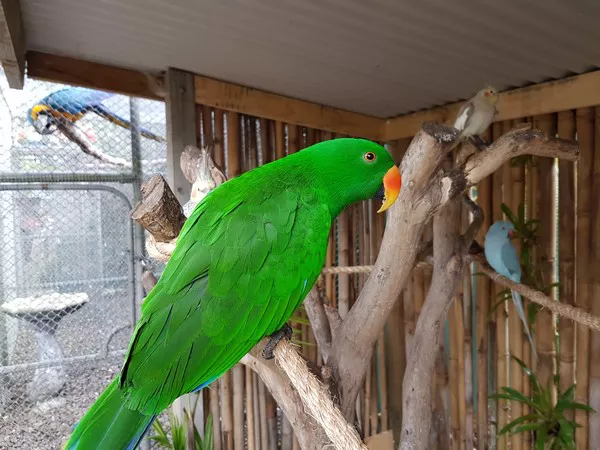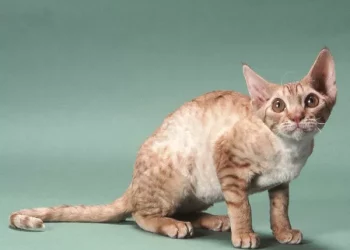Tortoiseshell cats, with their stunning coat patterns, have captivated feline lovers for generations. These unique felines are known for their intricate and vibrant blend of colors. However, when it comes to predicting the color of kittens born to a tortoiseshell cat, the situation becomes more complex. In this article, we will delve into the genetic intricacies behind tortoiseshell cats and explore the range of colors their offspring can inherit.
Understanding Tortoiseshell Coat Patterns:
Tortoiseshell cats, also known as torties, exhibit coat patterns that are both beautiful and intriguing. Their unique markings create a mesmerizing display of colors, often resembling the shell of a tortoiseshell, hence their name. Let’s explore the fascinating world of tortoiseshell coat patterns and understand what makes them so special.
The Patchwork Phenomenon:
Tortoiseshell cats are characterized by patches of two distinct colors: black and orange. These patches can vary in size, shape, and intensity, creating a mosaic-like pattern on their fur. The striking contrast between the two colors gives torties their distinctive appearance and makes them stand out among other feline breeds.
The Role of Genetics:
The captivating coat patterns of tortoiseshell cats are determined by the interaction of specific genes and the process of X-chromosome inactivation. As mentioned earlier, the gene responsible for producing the orange pigment (pheomelanin) is located on the X chromosome. Since females have two X chromosomes (XX), they have the potential to display both black and orange coat colors.
X-Chromosome Inactivation:
During early embryonic development, one of the X chromosomes in female mammals, including cats, is randomly inactivated in each cell. This inactivation leads to the formation of patches of cells that express either the orange or black color gene. Consequently, the tortoiseshell pattern emerges as the two colors intermingle on the cat‘s fur.
Tortoiseshell Cats Are Almost Always Female:
The genetic interplay that produces tortoiseshell coat patterns is linked to the sex chromosomes. As a result, almost all tortoiseshell cats are female. Male cats, having only one X chromosome (XY), do not possess the genetic makeup necessary to exhibit the tortoiseshell pattern. However, male cats can carry the genes responsible for tortoiseshell coats and pass them on to their female offspring.
Rare Male Tortoiseshells:
While extremely rare, male tortoiseshell cats do exist. This occurrence is due to a genetic anomaly where the male cat possesses an extra X chromosome (XXY). The additional X chromosome enables the expression of both the orange and black color genes, resulting in a tortoiseshell pattern. Male tortoiseshells are considered unique and often hold a special place in the hearts of cat enthusiasts.
Variations in Tortoiseshell Coat Colors:
Tortoiseshell coat patterns can exhibit variations beyond the classic black and orange combination. Some torties may have additional colors, such as white, cream, or gray, interspersed within their patches. These variations arise from other genetic factors, such as dilution genes or white spotting genes, which can modify the intensity or pattern of the coat colors.
Genetics Behind Tortoiseshell Coat Colors:
To truly understand the genetics behind tortoiseshell coat colors in cats, we must delve into the fascinating world of feline genetics. The complex interplay of genes determines the unique coat patterns observed in tortoiseshell cats. Let’s explore the genetic factors at play:
The Orange Gene (O):
The orange or red coloration in a cat’s coat is produced by the presence of a gene known as the Orange gene (O). This gene is responsible for the production of the pigment called pheomelanin, which gives rise to the orange hue. Cats that possess at least one functional copy of the Orange gene will display orange fur patches.
The Black Gene (o):
The black gene (o), also known as the non-orange gene, is responsible for the production of the pigment eumelanin, which produces black or dark-colored fur. Cats that carry two copies of the black gene will have a predominantly black coat, while those with one copy will have a diluted black or gray appearance.
The Tortoiseshell Gene (X):
The tortoiseshell gene (X) is found on the X chromosome, one of the two sex chromosomes. This gene plays a crucial role in determining the unique coat pattern seen in tortoiseshell cats. Females have two X chromosomes (XX), while males have one X and one Y chromosome (XY).
X-Chromosome Inactivation:
During early development, in female mammals including cats, one of the two X chromosomes is randomly inactivated in each cell. This process, known as X-chromosome inactivation or Lyonization, leads to the formation of patches of cells expressing either the orange gene (O) or the black gene (o). Consequently, tortoiseshell cats display a mosaic-like pattern, with distinct patches of black and orange fur.
Additional Genetic Factors:
While the Orange gene (O), the black gene (o), and the tortoiseshell gene (X) are the primary determinants of tortoiseshell coat colors, other genetic factors can influence the final appearance. Dilution genes, such as the blue or chocolate gene, can alter the intensity of the black or orange pigments, resulting in lighter shades. White spotting genes can also introduce patches of white into the tortoiseshell pattern.
Inheritance Patterns:
When a tortoiseshell female cat mates, the color genes she carries will determine the potential coat colors of her offspring. If she mates with an orange male cat (OY), all female kittens will be tortoiseshell (XO) and all male kittens will be orange (OY). If she mates with a black male cat (oY), the female kittens will be tortoiseshell (Xo) while the male kittens will be black (oY).
Color Possibilities of Tortoiseshell Cat Offspring:
When it comes to predicting the color possibilities of kittens born to a tortoiseshell cat, the genetic combinations involved can create a range of outcomes. The color possibilities depend on the genetic makeup of both the tortoiseshell cat and its mate. Let’s explore the various scenarios:
Tortoiseshell Female x Orange Male:
If a tortoiseshell female mates with an orange male, the potential color combinations of the offspring are as follows:
- Female Kittens: Since the female kittens inherit an X chromosome from both parents (XO), they will be tortoiseshell cats with patches of black and orange fur.
- Male Kittens: Male kittens, having an XY combination, receive the Y chromosome from the father, determining that they will be orange cats (OY).
Tortoiseshell Female x Black Male:
If a tortoiseshell female mates with a black male, the potential color combinations of the offspring are as follows:
- Female Kittens: Female kittens will inherit one X chromosome from the mother (XO) and one from the father (Xo). As a result, they will be tortoiseshell cats with patches of black and orange fur.
- Male Kittens: Male kittens inherit the Y chromosome from the father (Yo) and the X chromosome from the mother (Xo), resulting in their solid black coat color.
Tortoiseshell Female x Tortoiseshell Male:
When two tortoiseshell cats mate, the potential color combinations become more complex due to the genetic interactions involved:
- Female Kittens: Female kittens will inherit one X chromosome from each parent (XO from the mother and XO or Xo from the father). This genetic combination results in various possibilities, including tortoiseshell patterns with patches of black and orange, as well as variations that may include additional colors like white or gray.
- Male Kittens: Male kittens inherit the Y chromosome from the father (Yo) and the X chromosome from the mother (XO or Xo), resulting in solid black coat colors.
It’s important to note that these color possibilities are based on simplified genetic models and assume that the traits mentioned are the only ones at play. In reality, other genetic factors can influence coat colors, such as dilution genes or white spotting genes, leading to even more diverse outcomes.
Conclusion:
Tortoiseshell cats are remarkable creatures, boasting unique coat patterns that have fascinated humans for centuries. While predicting the exact color of kittens born to a tortoiseshell cat is challenging due to the complex interplay of genetic factors, we can expect a range of colors, with variations of black and orange being the most common. Each litter of kittens holds the potential for surprises, with their own distinct blend of colors, making the world of tortoiseshell cats a true kaleidoscope of feline beauty.

























